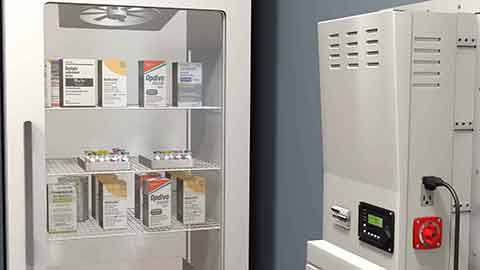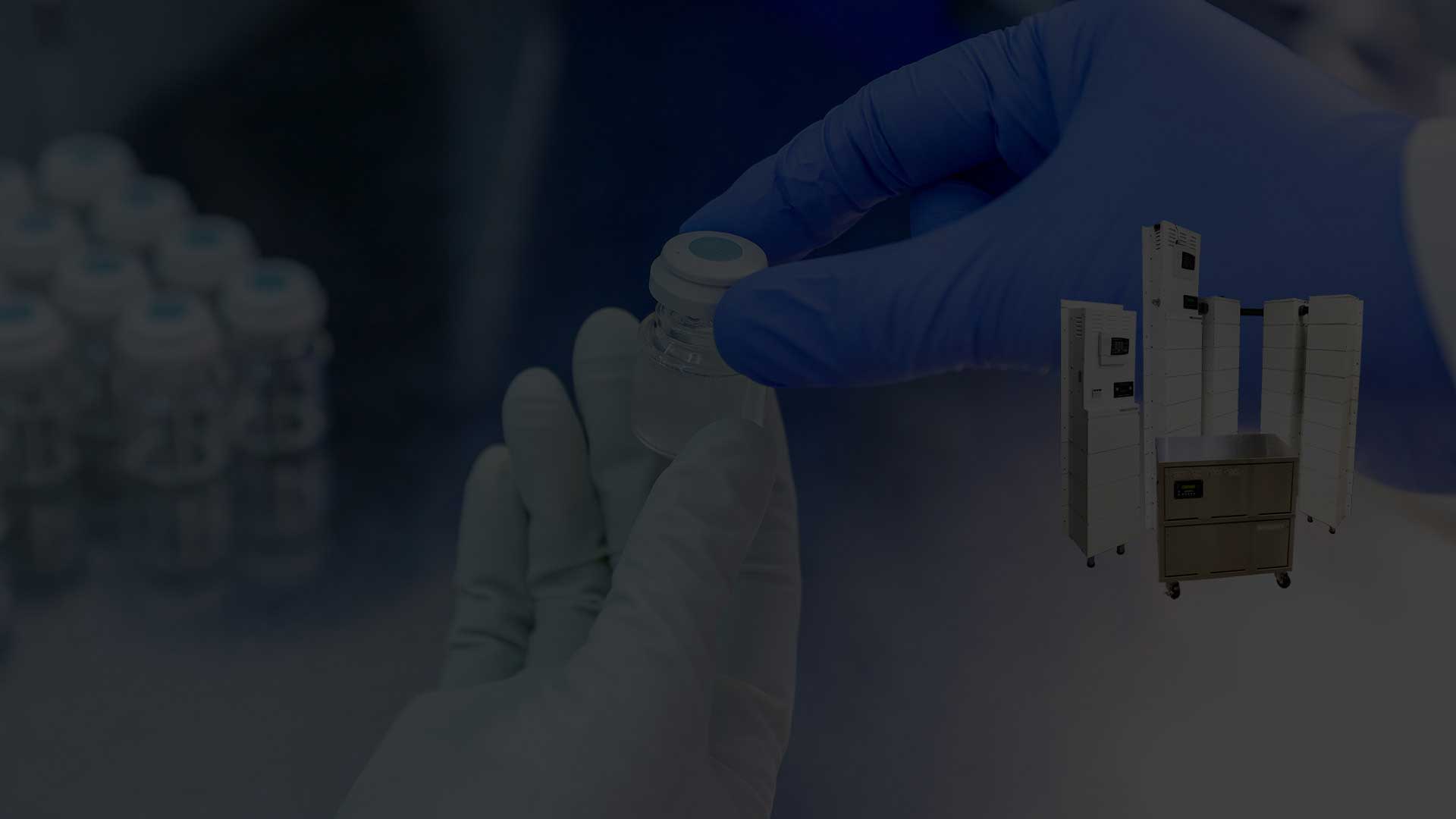Battery Powered Rechargeable Generators, Explained.
(Article Updated 3/1/22)
Battery generator vs Inverter Generator
According to the United States Energy Information Administration (EIA), in 2020 the average U.S. customer experienced over 8 hours of power loss, up over 20 minutes (4.17%) from 2017 and over double the average out time from 2013 to 2016. Accounting for the increase almost entirely, is the rapid growth in occurrences of major weather events affecting both US and global customers, primarily due to climate change.
The ever rising cost of gasoline prices and general trend of transitioning away from fossil fuels in the US due to their contribution to climate change signals that a traditional gasoline powered generator may not be the most practical choice when determining the optimal backup power solution.
With climate change becoming an issue that requires very real day-to-day solutions to minimize its effects, what are your options when thinking about the best ways to ensure your healthcare practice is prepared and your downtime non-existent?
The requirement for most gasoline generators to be housed outside and require manpower to operate also means increased risk exposure when attempting to operate your backup power source during an inclement weather event. If the gasoline you've stored on-site goes bad between uses or if you find yourself out of fuel, sourcing additional gas during a major weather event could prove to be not only a monumental task, but a dangerous one as well.
Battery powered generators solve many of these issues. Being recharged by general utilities means that as the United States transitions to more renewable sources of power like solar energy, a battery backup unit becomes a more environmentally and price conscious choice to deploy.
Also, our Medi-Products battery backup units deploy automatically and instantly upon loss of power. This, In combination with a maintenance free, solid-state design, means reliable backup power with an SLA battery (sealed lead acid) is always at the ready.
With no manpower required to get the system up-and-running, Battery is also a much safer option for staff and facilities managers who may find themselves on site during an outage or major weather event, without needing to expose more people to the harsh elements that may exist. This is opposed to gasoline powered generators which emit exhaust fumes and therefore need to operate outdoors.
How Do Rechargeable Generators Work?
Rechargeable generators present an excellent and unique choice for emergency backup power; as the generator batteries have energy stored in reserves that are constantly kept at full charged. How this works is that power from your standard AC utilities pass through the system and power your appliance as normal while ‘trickle charging’ the batteries simultaneously.
If utility power is lost, the rechargeable generator will instantly turn on, running off of battery power for as long as the system allows. Once utilities are restored, the system will switch back over to wall power and continue to run the appliances while once again recharging the batteries, at the ready for when it needs to be deployed next.
Medi-Products own battery backup power units achieve this by operating in 3 modes: “Standby”, “Power Outage” and “Recharge Standby”. Here's a brief rundown of each:
Once utility power goes out, the battery backup systems internal switch will activate instantly, drawing energy from the batteries, and continuing to power the appliance (or appliances) automatically.

Upon restoration of utility power, the battery backup system will return to standby mode and automatically restore utility power to the appliance. At the same time the battery backup system will also charge the batteries until they have returned to their full capacity, at which point it will then switch back to "Standby Mode".
How long does it take to recharge an emergency generator?
The amount of time it takes to recharge a battery powered generator is dependent on a number of unique factors. Firstly, is the size and number of the batteries in the battery bank. A good rule of thumb is that it generally takes about as long to recharge the batteries as it did to deplete them. Another factor to consider is the rate the charge controller is set to.
For emergency backup systems there is usually no hurry to recharge the battery packs, as they are only used on occasion. In this case you would want to set the charge controller to a low rate.
If the charge controller is set to a high rate, it will limit the amount of power available to power the load without blowing the circuit breaker. However, based on the reliability of utility power from your provider you may decide to alter the rate at which your backup system recharges itself in order to match your level of risk tolerance.
How much electricity does it take to recharge battery generator?
The amount of electricity it takes to recharge the battery generator will depend on how depleted the battery sources are before recharging. If the batteries are very low, the charger will use the max power available on the circuit once the load is subtracted. However, if the battery is fully charged, only ‘trickle charging’ will be required, which will use very little power.
Can you use a gas-powered generator to recharge a UPS (Uninterruptable Power Supply)?
In the event of an extended power outage, the batteries in a UPS, or rechargeable generator, may become depleted before utility power is restored. In this case it may be necessary to use a gas-powered portable generator to recharge the batteries. However, this is quite an extreme scenario that is very unlikely to occur. When excluding major events, the EIA has found that the average customer experiences outages averaging approximately 2 hours (106-118 minutes).
However, the same report has stated that outage time due to major weather events has doubled since ~2016 as well. In this case a 2-pronged approach could prove to be advantageous. Instant and easy power when you need it during inclement weather and an alternative plan for longer sustained needs in the rare cases you need it.
The advantage to this approach is that battery powered generator will instantly turn on during an emergency, which can often be at night or during a storm when it is not safe to travel. This will give you time, so that the gas-powered generator can be set up to recharge the battery backup once it is convenient and safe.
Additionally, you would be able to assess how long more accurately you may be out of power for, with any governmental direction, support, and recommendations being factored into your decision.
Find Out More
To answer even more of your questions and find additional solutions to problems that could affect your medical facility or laboratory, check out these other articles from the Medi-Products blog including:
What Size Generator is Needed to Run a Refrigerator?
How to Convert 60hz to 50hz Appliances in your Medical Practice
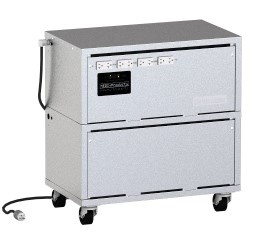
Medi-products offers a unique line of both mobile portable power stations as well as wall-mounted battery backup rechargeable generators. Our systems are available in a variety of options. Hardwired Systems are ideal for remodels or new construction, while our plug-and-play units fit right into your already existing AC outlets.
Request a customized quote today! Our quotes are sized for your exact system requirements, whether its small appliances or ultra-low temperature freezers.
